Cruciferous vegetables are super veggies
Cabbage, cauliflower, kale, Brussels sprouts, broccoli are all vegetables many of us love to eat. Did we know that they are super veggies? They are Cruciferous vegetables belonging to the family Brassicaceae. Having many genera and species they are super because of a numerous health benefits. The alternate name of the family Cruciferae is due to the four petals of the flower resembling a cross.
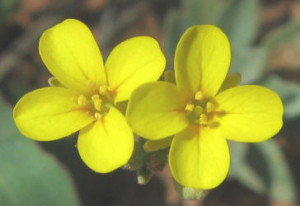
Mustard a cruciferous vegetable and oilseed have cross-shaped lowers
The family takes its alternate name (Cruciferae, Latin meaning for “cross-bearing”) as it resembles the cross pattern of the four petals of the flowers. However, the cruciferous veggies are now becoming popular “brassica” a word in Latin that means “cabbage”. Farmers also refer to such vegetables “cole” crops. The reference of “cole” crops denotes to the stalk or stem of the cabbage. As mustard belongs to this family Cruciferous vegetables are also often symbolized as the vegetables of the mustard family popular more for mustard oil from seeds.
Other vegetables of the brassica or cruciferous family are horseradish, radishes, collard green, turnip, rutabaga, watercress, and many more.
Why Cruciferous vegetables are super veggies?
The combination of macro, micro and vitamins, minerals and the quality of phytonutrients are important in making a food product worth becoming a daily consumable part of a diet. Cruciferous vegetables of at least 18 different type all have valuables nutraceuticals that give anti-oxidation properties and scavengers of the toxin. Let’s see some of the roles that this element plays in making crucifers super vegetables.
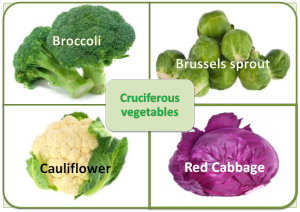
Four popular super veggies
Macronutrients
The super veggies of the brassica family are rich in nutrients. They contain minerals, vitamins, carbohydrates, proteins, fats and above all a tremendous source of fibre. As regards the quality of fat a 100 calorie diet of cruciferous vegetables supplies between one-half to one-third and of a gram of omega-3 fat (i. e. 333-500 milligrams). Due to its rich and balanced nutrients, the cruciferous vegetables are simply super veggies.
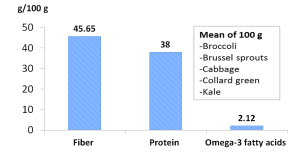
Mean fibre, protein and fat content of 5 cole veggies
Fibres make crucifers super veggies
There is no doubt that fibre helps in metabolism and regulation of bowel movement. Fibre removes fat. A 100 g contains about 45 g fibre and contributes strongly to protection colon and digestive tract cancer. Super veggies like the broccoli, cabbage, cauliflower, kale should be a compulsory addition of human diet.
Vitamins make crucifers super veggies
Cruciferous veggies are super as they contain vitamins A, a complex of B, C and K. Vitamin A is excellent for the eyes, retains the immune system and helps in cell growth. The precursor of vitamin A, Beta-carotene is the antioxidant that protects cells from the damage of due to oxidation. There is 9216.2 IU unit Vitamin A in 100g of 5 “cole” vegetables—broccoli, Brussels sprouts, cabbage, collard green and kale.
The B vitamins
- — reduces mood swings
- — releases stress
- — sharpens memory
- — Relieve PMS
- — relieves anxiety and depression
- — Reduce heart-disease risk
- — boosts energy
An average of 149.2 mg Vitamin C in 100g makes it a super veggie no doubt. The presence of vitamin K at 1054 mcg especially in kale and collards — is interesting in light of exhaustive research done on cancer and inflammatory impact of cruciferous super veggies. In addition, there is on an average172 mcg of Folic acid. Folic acid is indispensable antioxidants that are easily absorbed by the body. The Vitamin K content in crucifers helps in preventing the growth of cancer cells.
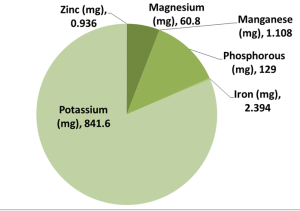
Minerals in super veggies per 100 g
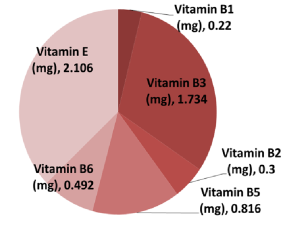
Vitamins in Super veggies per 100g
Amino acids
The unique amino acids present in crucifiers are L-alanine, L-glutamic acid, L-aspartic acid, L-glutamine, L-histidine, L-phenylalanine, L-tryptophan, L-methionine, L-threonine and L-valine). These are the building blocks of high-quality protein that give crucifers the special replacement one would get from meat.
Phytonutrient compounds that make crucifers super veggies
The brassica family contains a number medicinal compound such as glucosinolates, flavonoids, phenylpropanoids, hydroxycinnamic acids, phenolics, indoles glucosinolates, dithiol thiones, glucoraphanin, s-methyl cysteine sulfoxide, isothiocyanates, indole-3-carbinol. Many compounds are derivatives. These agents have potentially detoxification properties of carcinogens and, therefore, anticancer agents. According to the American Institute for Cancer Research, besides maintaining the immune system, the phytonutrients of crucifers make them super vegetables as they have the ability to halt the advance of cancer cells of breast tumor cells, uterine lining (endometrium), lung, colon, liver, and cervix, The phytochemicals properties contribute to the reported antioxidant, anti-carcinogenic, and cardiovascular protection and makes cruciferous vegetables super veggies.
The pungent odors that come out while cooking the vegetables are due to the enzymatic and chemical reaction of the rich phytochemicals. These, in fact, are diuretics, clear off the body toxins and relieves from many illnesses. All parts such as leaf, stem, stalk, leaves, flowers, roots and seed of cruciferous vegetables are consumable. A mix and match of all parts make them nutritious food a person needs in a diet as super veggies.

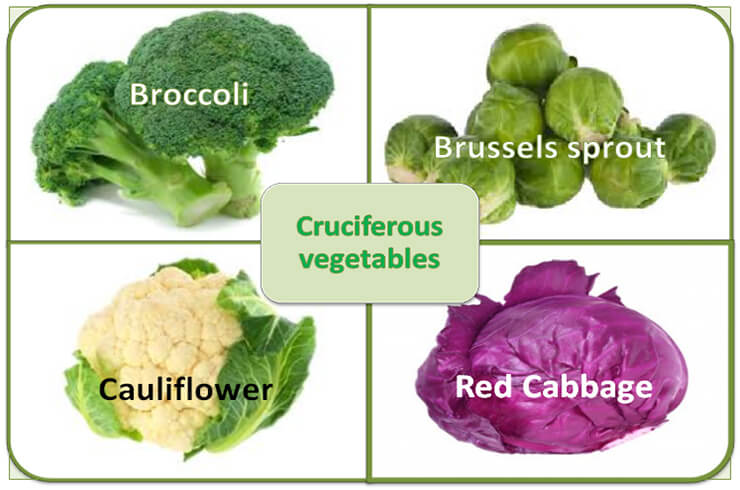
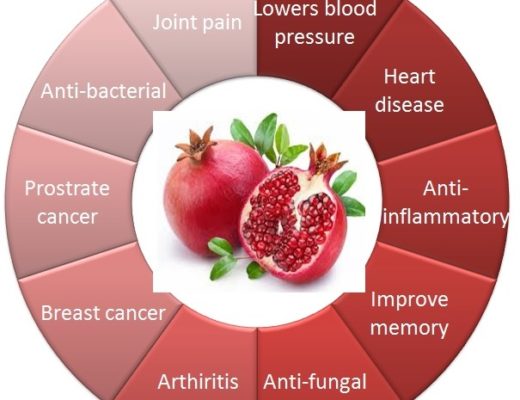
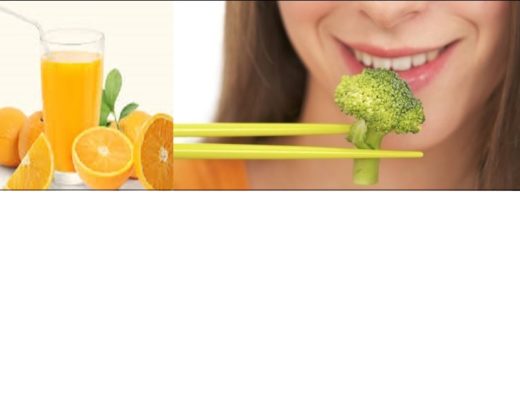
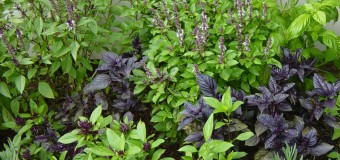
No Comments